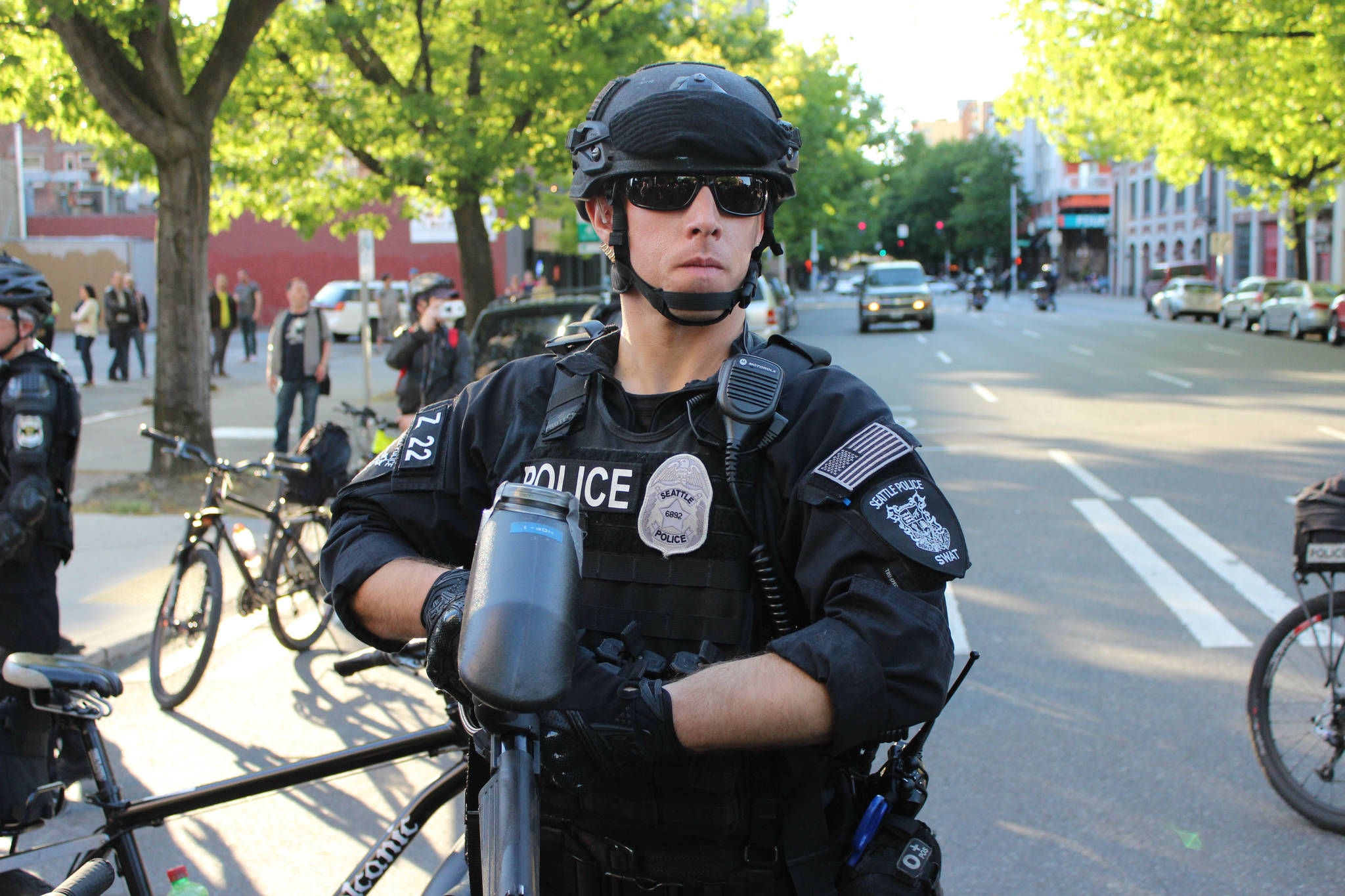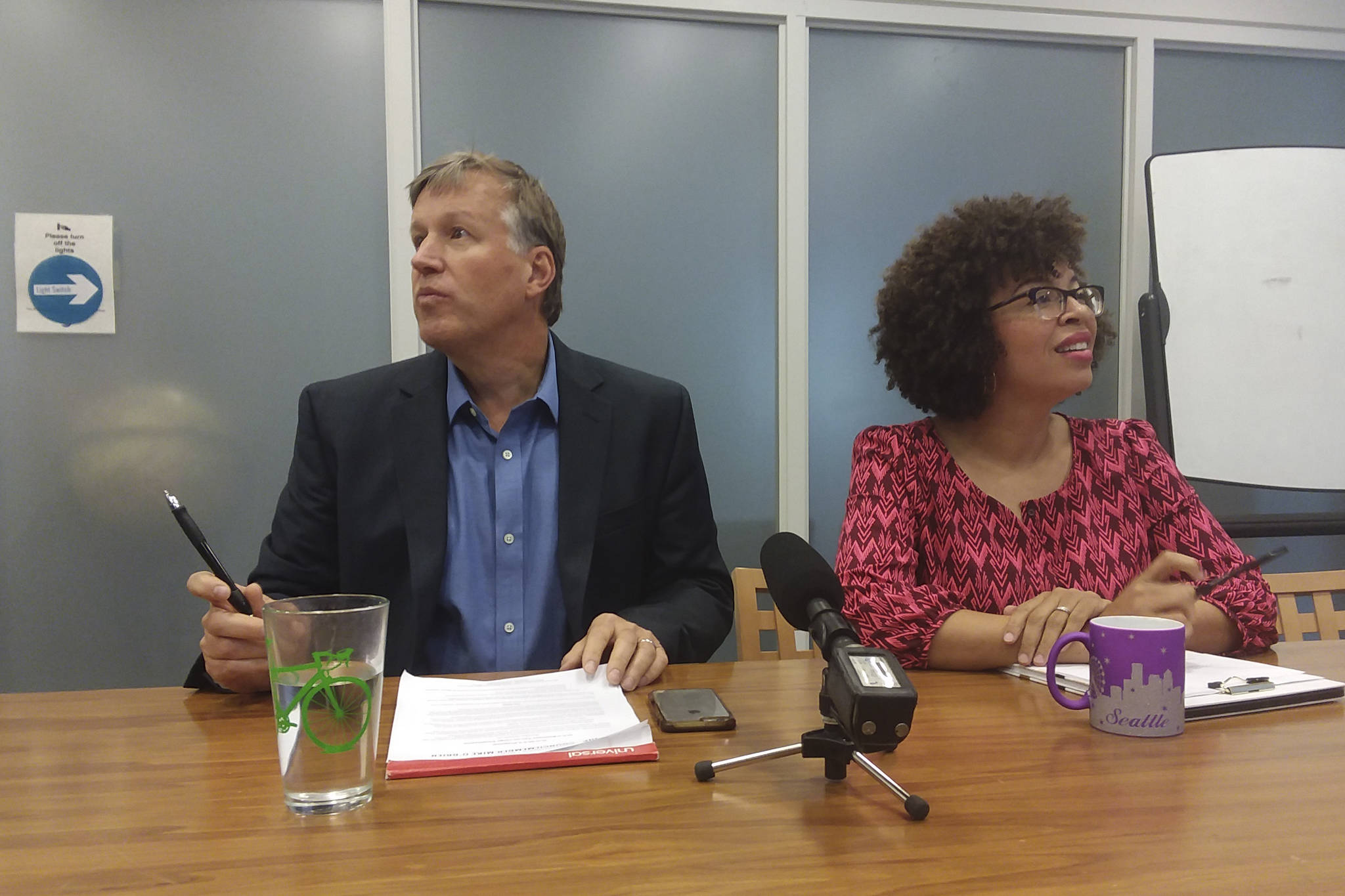Last week, the chief of police and the mayor’s budgets czar asked for a new north Seattle police precinct. There’s little doubt that the current north precinct, with a leaky basement and severe over-crowding, is inadquate to the Seattle Police Department’s needs. But the unprecedented $160 million price tag for the proposed new facility is facing sharp scrutiny from members of city council, and proponents have offered precious few details about either where that money would come from or how it would be spent.
When it comes to requesting capital funding, Seattle police have grown bolder in the past 17 years. In 1999, a Seattle Times story about the newly opened, $27 million West Precinct building described its “amenities never dreamed of” by officers at the old station. “From the big things—16 bunk beds, showers in bathrooms, more lockers than officers and a stall for every patrol car—to the little ones, like wider halls and higher ceilings, the new building may improve morale.”
The cost of that then-new, and fairly cushy, west precinct was $27 million. Under the propsoal now before the council, $27 million is how much the department says it needs just for the parking garage. The total $160 million pricetag for the new north precinct is equivalent to 14 percent (nearly one-seventh) of Seattle’s 2016 General Fund. By comparison, the ecotopian temple that is City Hall was completed in 2004 at a cost of about $73 million. The 13-story police HQ and municipal court building known as the “Justice Center” across the street was completed in 2002 cost $92 million. Given these precedents, it seems likely that SPD could build an adequate precinct for a fraction of their proposed budget. As commenter Omar Abdulalim told council, “I’m not for the police not having a police station. Spend $20 million [on the new precinct], spend the rest on where it’s needed the most.”
Tim Burgess, a former cop who holds one of two city-wide council seats, says he’s open to shaving down the precinct’s planned $27 million garage, which Erica C. Barnett has written about extensively. “I think the outstanding issue there is the parking structure,” Burgess says. “I don’t know where we’ll land on that particular aspect of it. That’s what’s driving a lot of costs.” (There’s a fair amount of available street parking nearby, according to ParkNav.com.)
Other than haggling over parking, though, Burgess supports the expensive project. “The other elements of the precinct, we can probably shave here and there and save a few dollars, but it’s not going to be substantial,” he says. “Unless you’re going to argue, as some will, that they shouldn’t have a break or exercise room…or that we should get rid of the firearms training facility that’s in the basement, or maybe we should not build it to LEED gold standards. That’s tens of millions of dollars in additional costs.”
Burgess thinks all of those price-raising amenities and features are justified by city government’s mandate to protect its citizens. “We have to remain faithful to the city’s primary responsibility, which the city’s charter is very clear is public safety…while also dealing with these other issues that are presented to modern American cities today,” he says. Asked about other uses for the funding—such as the current homelessness crisis—Burgess says, “That doesn’t mean that we don’t care about the homeless or about the deaths that have happened…That’s terrible. We have to deal with all of these things.”
On the other side of the debate is Mike O’Brien, whose District 6 is within the north precinct’s coverage area. Like Burgess, he supports a new precinct. But $160 million “is a lot of money,” he says. “We’re going to be back arguing and debating four months from now in the budget over trying to get a hundred or two hundred thousand dollars here and there. A one or two percent savings on a project like this is multiple millions of dollars.” According to the executive department, about 13 percent of the budget will be paid for through real estate taxes and borrowed money. The source of the remaining 87 percent, about $139 million, is “to be determined,” according to last week’s council presentation.
O’Brien says that ever since the new precinct “came onto my radar” in late March, he’s been asking the executive branch for a detailed breakdown of the costs. He’s still waiting.
“What does this project entail? How is the budget set? Are there cheaper alternatives?” he says. “That’s the type of analysis that I expect the city to be doing on projects of this scale. What I’ve seen to date is a lack of that type of analysis…It feels driven by the department saying, ‘This is the type of precinct we would like to have, period,’ and folks saying, ‘Okay, if that’s what you say you need, we’ll do it.’”
This post has been updated to correct the cost of Seattle’s city hall and to clarify the context of one of Councilmember Burgess’ statements.








